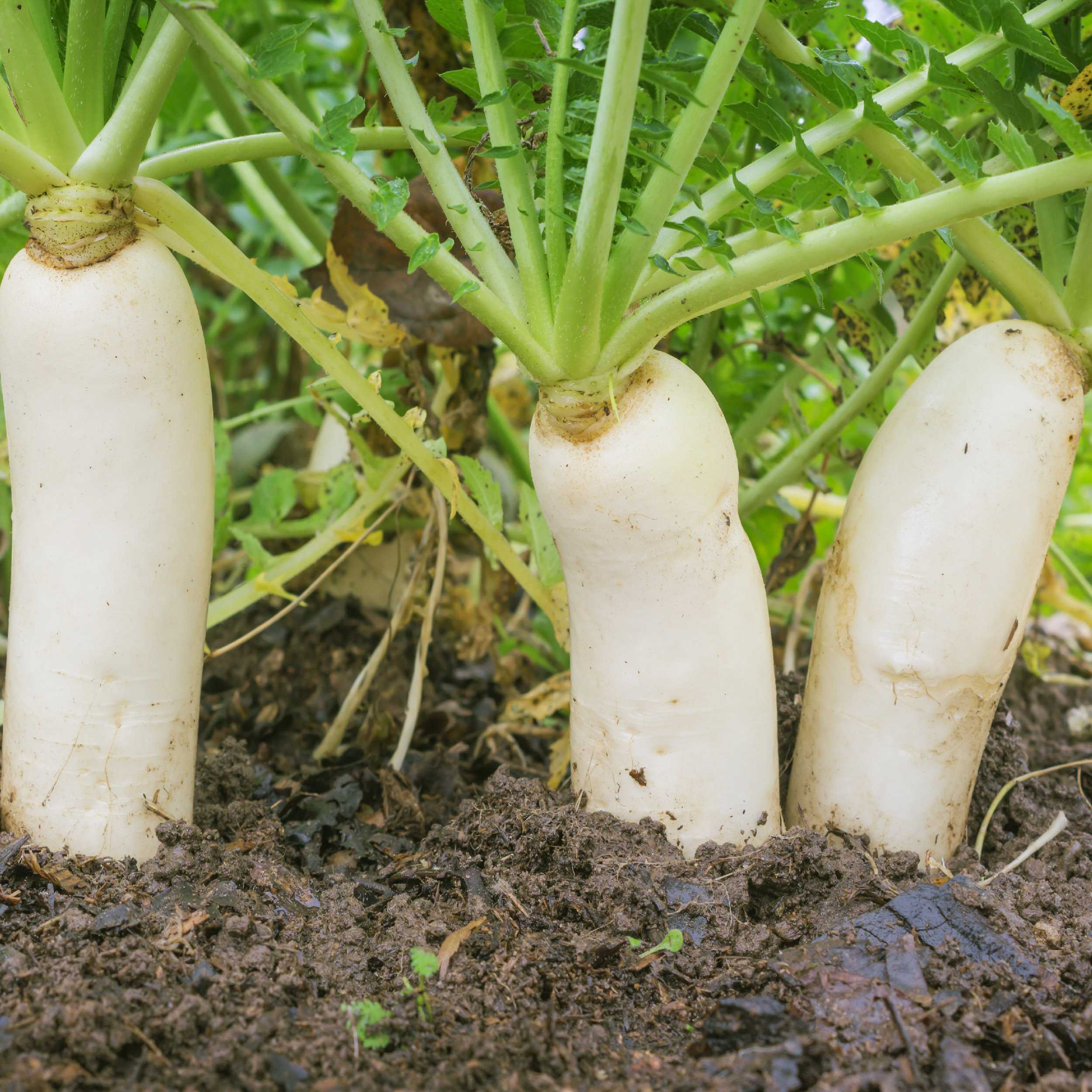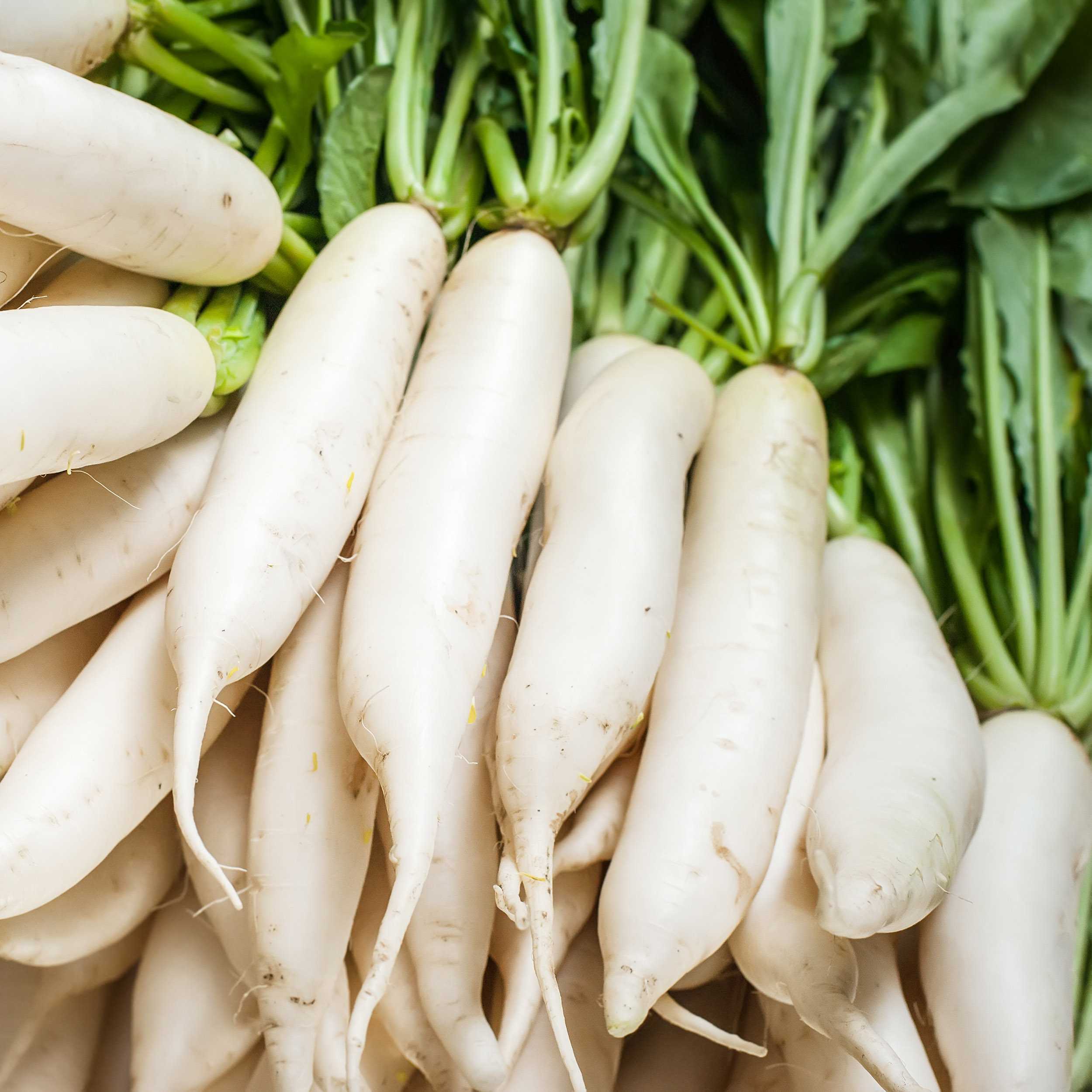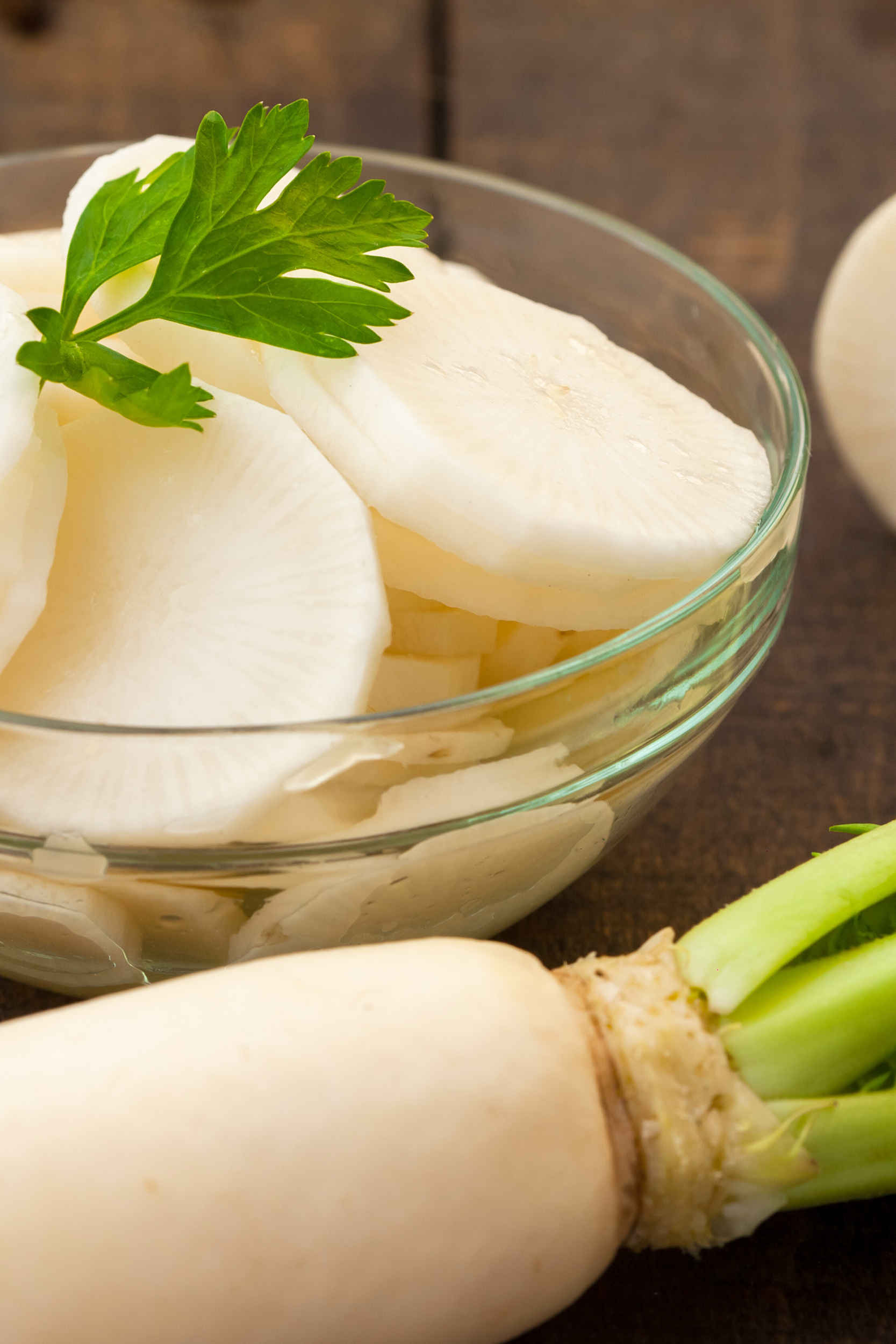Daikon Radish Seed




Fracking Daikon Radish is a deep rooted forage radish that will make an outstanding winter cover crop. The deep taproot of the large rooted plant can help break up the tough, compacted soil, improve water infiltration, suppresses weeds, eliminate pests and stores nitrogen. When planting daikon radish seed as a cover crop, the benefits will be optimized if planted in late summer:
Some people refer to Daikon radish as Oriental radish, Chinese radish, Satsuma radish amd Japanese radish. In fact, Daikon in Japanese means "big root." It is grown around the world, but primarily here in the U.S. Daikon radish seeds are planted as a cover crop to prevent soil compaction, which then allows soil to absorb more rainfall.
Daikon radishes look different than typical garden radishes. They have large, fast growing leaves and a long white root which looks similar to a pale carrot. Daikon can grow up to 20 inches long with a diameter of 4 inches. Their flavor is milder and less peppery than other radishes and can be eaten raw with a crisp and juicy texture. Or, if cooked, the taste is similar to turnip.
Benefits of Daikon
- Reduces soil compaction
- High Biomass production
- Increases water infiltration
- Excellent erosion control
- Great weed suppression
- Fast establishment

Daikon Radish | Edible
Cooking with Daikon Radish
Noodles: Try shredding daikon into “noodles” and adding to soups, stir-fries, or as the base for pasta sauce. Use a vegetable peeler to shave the long root into thin strips, then quickly cook into stir-fries, etc.
Salad: Peel, then grate, julienne, dice, or slice to add crunch to your favorite salad. Many like to sprinkle mine with Ume Plum Vinegar when using raw.
Stew: A somewhat traditional option, try adding big chunks of dakion radish to hearty stews. Try a Beef Stew with Red Wine & Herbs or Beet Bourguignon.
Roasted Like any root vegetable, daikon is great roasted. Use a basic recipe, then branch out to Miso Maple Roasted Vegetables.
Slow cooked baking pan or slow cooker with carrots, onions, garlic, low-sodium seasonings, low-sodium vegetable broth, lean meat. Turn on low and let the juices and flavors start mixing for an all-in-one meal

Health benefits
Boosting digestive health. Assists in detoxification — As a diuretic, daikon may help stimulate urination. Weight management — Daikon is a low-calorie and low-cholesterol vegetable, yet still high in fiber
- Breaks through hard, compacted soil layers
- Daikon radish is renown for softening the soil
- Daikon captures last year’s nitrogen, so you don’t have to fertilize
- pounds of delicious organic matter (up to 3700 lbs of roots/acre)
Plant daikon seeds a little earlier than other over-wintering cover crops to give it time to grow a thick leaf canopy. Aim for 4 - 10 weeks before the first frost – late August in cooler climates, early September in warmer ones. The seeding rate is 10 - 15 pounds of radish seed per acre. For a smaller area, the seeding rate is 1/2 pound of cover crop seed per 1000 square feet. Cover the seeds 1/4 - 1/2 inch with soil.































